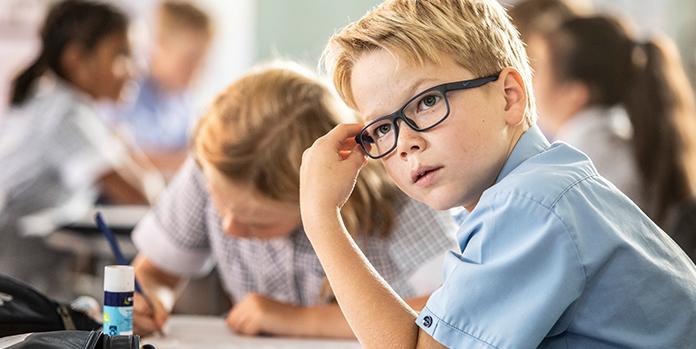At Grimwade House, learning happens everywhere, from our classrooms to our Chapel to our sporting fields. Ultimately, we want our students to be resilient, rigorous and reflective thinkers who can consume, integrate and communicate complex ideas and concepts in sophisticated ways. We take deliberate steps towards this goal every day.
In the classroom we draw on a range of educational methods to develop mastery in fundamental areas such as literacy and numeracy. Here, direct instruction is useful and standard approaches to measuring growth work well.
However, we also want to build the capacity for deeper thinking within each child. We want them to be able to question assumptions, test the validity of new ideas and draw links between concepts. This higher order knowledge development can require quite different approaches.
Key strategies in our teaching 'toolbox'
A key method we use to encourage deep thinking at Grimwade House is ‘inquiry learning’. This involves challenging assumptions, undertaking research, forming links between ideas and looking for new possibilities. This is intended to lead students to move beyond merely knowing to understanding, exploring and analysing. Part of this process asks students to reflect upon their learning – what have they learnt, how can they demonstrate what they have learnt and, given that learning, what could they explore now.
Determining how well students have mastered deep thinking requires careful planning. One of the practices employed at Grimwade House is ‘visible thinking’. Here, we ask students to demonstrate their thinking and learning in a variety of ways. This visible thinking could include asking students to prepare a talk on what they have learned so far, write a reflective piece, or even create an object that represents their understanding of key concepts.
By making students’ thinking visible, we can observe what they have learned and how they have learnt it, identify any gaps, and assist them to further crystallise their own understanding. We can also help to further develop students’ thinking as we can see the way they have approached problems and what analysis they have done. This enables the teacher to intervene in the thinking process.
Helping students learn how to learn
It is our view that if students can learn how to learn, then they are best placed to succeed in future endeavours. Therefore, whether acquiring information or developing deep knowledge, it is important that students reflect on their own learning strategies. We ask them to identify their strengths, look for new opportunities for growth and to appreciate the rigour and methodology associated with the learning strategy employed at that time.
For Grimwade House to offer the best educational experience possible, teachers must continually review the teaching and learning practices occurring in their own classroom. We expect our teachers to have a strong understanding of a wide range of educational pedagogies and to apply them in clever, appropriate ways recognising that one size does not fit all. Here, teachers use strategies such as inquiry, visible thinking, and explicit teaching so as to engage in their own continuous professional self-reflection and improvement.
We believe we have a strong learning culture at Grimwade House, one in which there is a shared appreciation of the value of learning and a common understanding of the benefit of being willing to challenge ideas and also to have their own ideas challenged. With a confident approach to learning, new tasks can become less daunting.
Royce Helm
Head of Grimwade House
Related topics
